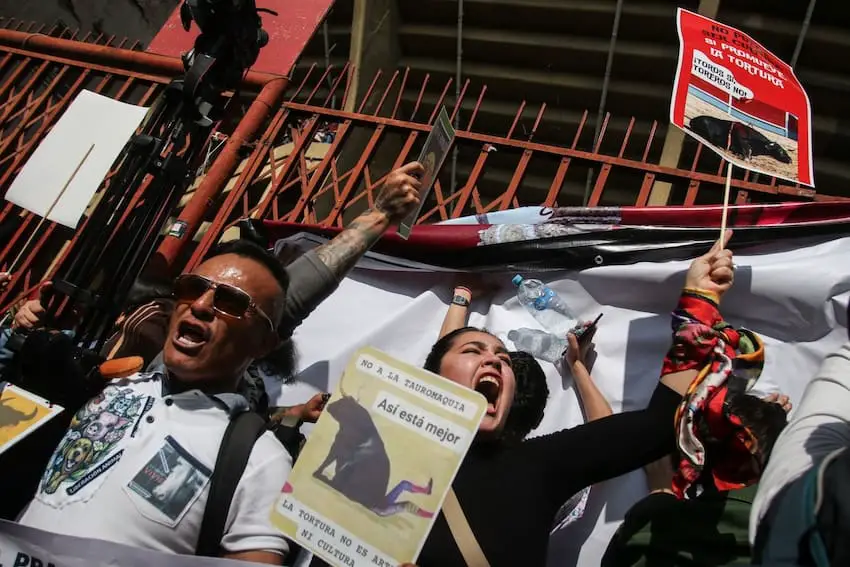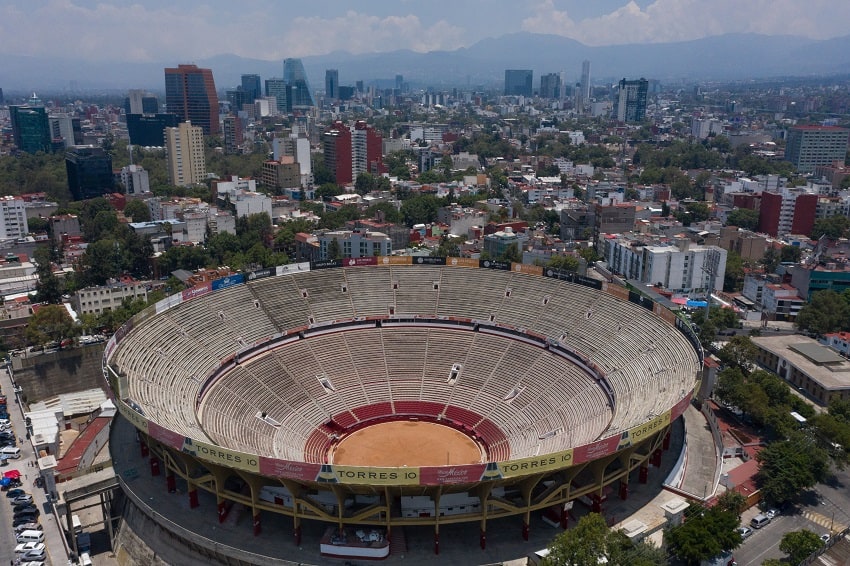Less than three days after 40,000 fans packed the stadium to see a bullfight in Mexico City, a federal judge has ruled that bullfights in Plaza México must once again be halted.
Judge Sandra de Jesús Zúñiga on Wednesday granted a provisional suspension that will remain in place until the next hearing on Feb. 7, when it will be determined if the suspension becomes permanent.

The competition on Sunday — in which six bulls fought and all were killed — marked the first bullfight in Mexico City in 20 months.
In the first half of 2022, a lower court judge issued an injunction that sided with activists, mainly on the point that bullfighting hinders people’s rights to a healthy environment. But this decision was overruled by the Mexican Supreme Court (SCJN) in December..
That opened the door for nine bullfights to be scheduled from Jan. 28 through March 24 at Plaza México, now the capital’s only official bullring. It has been hosting events since 1946.
Now, however, the two bullfights scheduled for Sunday, Feb. 4 and Monday Feb. 5 are up in the air, as well as those that follow. It wasn’t immediately known if Plaza México would try to overturn the decision before the hearing scheduled for next week, or even if that would be possible by Friday.

In making her ruling on Wednesday, Fifth District Judge de Jesús accepted an injunction presented by the animal rights association Todas y Todos por Amor a los Toros (Everyone for the Love of Bulls).
Her ruling hinged on a law against “mistreatment and cruelty” for animals in public shows, rather than the 2022 ruling, which focused on presenting a healthy environment for people.
Before and during the Jan. 8 bullfight, members of the Todas y Todos organization– and others – protested outside the stadium. Estimates put the number of protesters between 200 to 300.
Her ruling was based on the Animal Protection Law of Mexico City, which while not specifically prohibiting bullfighting, calls for action when a complaint is filed.
Bullfighting is currently prohibited in five states: Sonora, Guerrero, Sinaloa, Coahuila and Quintana Roo. Meanwhile, it is considered as an intangible part of cultural heritage in Aguascalientes, Tlaxcala, Hidalgo, Querétaro, Zacatecas, Michoacán, Nayarit and Guanajuato.
